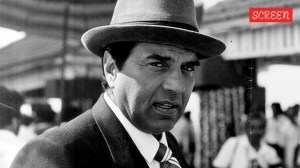A personal story of sita
Retelling the Ramayana in an animated film,comic-strip artist Nina Paley has woven her life story into Sitas tragic saga
Retelling the Ramayana in an animated film,comic-strip artist Nina Paley has woven her life story into Sitas tragic saga
WHAT do a 3,000-year-old Sanskrit epic,a 20s-era jazz singer and Indonesian shadow puppets have in common? Theyre all part of the eclectic cultural tapestry that is Sita Sings the Blues,an 82-minute animated feature that combines autobiography with a retelling of the classic Indian myth,the Ramayana,and that required its creator,the syndicated comic-strip artist Nina Paley,to spend three years transforming herself into a one-woman moving-picture studio.
At some point everything went through my computer, said Paley. Her decision to do it herself may have satisfied her creative urges,but it also put her more than $20,000 in debt.
Its hard to imagine how Paley,40,could have farmed out the writing,directing,editing,producing and animating of Sita Sings the Blues. As engaging as the film is,explaining it is tricky: along with traditional 2-D animation there are cutouts,collages,photographs and scenes with hand-painted watercolours as the backdrop. At certain points Paley mixes laughs with exposition by having three flat silhouette characters dispute the details of the Ramayanas tragic saga of the Hindu goddess Sita.
At other points Paley weaves in the story of her own collapsing marriage,and the time switches from ancient India to present-day San Francisco and Manhattan,the images hand-drawn and jittery. And singing by real-life flapper-era singer named Annette Hanshaw.
Paleys imaginative leaps and blend of styles are part and parcel of the films visual and aural originality. You can actually feel how much time went into it, said Alison Dickey,a film producer and one of the jurors who nominated Paley for Film Independents Someone to Watch honour. We see so many films,and when you come across one like this,you just feel like youve stumbled upon a gem.
In 2002 Paley followed her husband,an animator,from their home in San Francisco to a town in western India. It was there that she first learned of the tale of the Ramayana. When she reached the part when Sita kills herself to prove her fidelity,she said,she thought,Thats just messed up and wrong.
An idea for a post-feminist comic strip began brewing. In it her new ending would still have Lord Rama rejecting Sita,but instead of committing suicide she would become empowered. She says,Im going to go join a farming collective.
Before Paley could commit her I-will-survive strip to paper,though,life intervened. While she was on a business trip to New York,her husband sent her an e-mail message telling her not to return. In a state of grief,agony and shock,she remained in Manhattan,camping out on friends sofas.
One of her hosts,a collector of vintage records,played Annette Hanshaws shiny rendition of Fred E. Ahlert and Roy Turks bluesy lament Mean to Me. A friend of mine joked,Thats your theme song, Paley said. At the time,she didnt have the money or the emotional energy to envision more than a short film.
That film,Trial by Fire,was so successful on the festival circuit that Paley kept expanding the project,using successive chapters of the Ramayana and Hanshaws songs as Sitas sung narrative. It sounds dumb,but the movie wanted to be made, she said. There was this music and this story. It was like: Someones got to make this movie. I guess its going to be me.
MARGY ROCHLIN,NYT





- 01
- 02
- 03
- 04
- 05


























